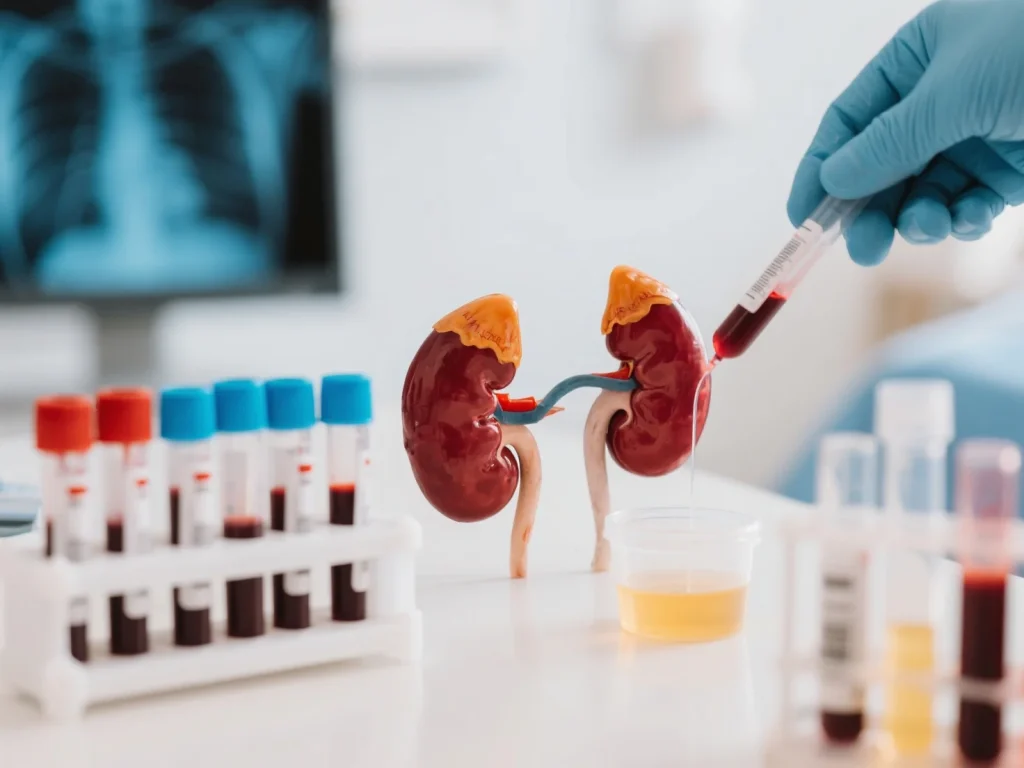1. Complete Blood Count
In uremia, hemoglobin typically falls below 80 g/L, often ranging from 40–60 g/L, indicating normocytic normochromic anemia. In cases of chronic blood loss or malnutrition, microcytic hypochromic anemia may occur. White blood cell counts remain largely unchanged but may rise during acidosis or infection. Platelet counts are low or normal, but their function is impaired. Erythrocyte sedimentation rate often accelerates due to anemia and hypoproteinemia.
2. Urinalysis
Urinalysis results in uremia vary significantly depending on the underlying cause. Common features include:
① Low urine osmolality: Morning urine is typically below 450 mOsm/kg, with a low specific gravity, often under 1.018. In severe cases, it stabilizes between 1.010–1.012. During concentration-dilution tests, nocturnal urine volume exceeds daytime volume, with specific gravity not exceeding 1.020 and a difference between highest and lowest specific gravity less than 0.008.
② Reduced urine output: Usually below 1000 ml/day, and in late stages, when creatinine clearance drops to 1.0–2.0 ml/s, anuria may occur.
③ Proteinuria: Ranges from + to +++, but in late stages, as most glomeruli are destroyed, proteinuria decreases.
④ Urine sediment: Contains varying amounts of red blood cells, white blood cells, epithelial cells, and granular casts. Waxy casts—short, broad, homogeneous, with notched edges—are diagnostically significant.
3. Kidney Function Tests
During the compensatory phase of renal insufficiency, creatinine clearance declines, but serum creatinine remains normal. In azotemia, serum creatinine rises, yet clinical uremic symptoms and metabolic acidosis are absent. In uremia, when creatinine clearance falls below 25 ml/min, serum creatinine markedly increases, accompanied by metabolic acidosis.
4. Blood Biochemistry
Plasma protein levels decrease, with total protein often below 60 g/L, and albumin typically under 30 g/L. Serum calcium is low, around 2 mmol/L, while serum phosphorus often exceeds 1.7 mmol/L. Potassium and sodium levels vary with the condition.
5. Other Tests
(1) X-ray Imaging: Abdominal X-rays assess kidney size, shape, and the presence of urinary stones. Lateral abdominal films detect arterial atherosclerosis. In severe renal insufficiency, contrast imaging is avoided due to poor excretion of contrast agents, which often fails to visualize.
(2) Radionuclide Renography and Kidney Scans: These evaluate kidney size, blood flow, secretion, and excretion functions bilaterally.
(3) Renal Ultrasound and CT: These determine kidney position, size, cortical thickness, and detect hydronephrosis, stones, or tumors. Typically, uremic patients show bilateral kidney atrophy and thinned cortices. However, in secondary uremia caused by diabetes, lupus, or vasculitis, kidneys may not shrink significantly, though cortical echogenicity increases on ultrasound. Renal ultrasound is widely used due to its affordability, convenience, non-invasiveness, and speed.

Share this content:

Leave a Reply